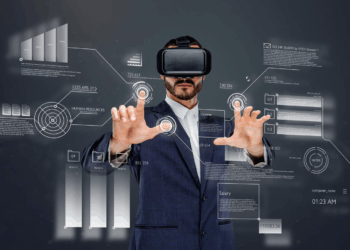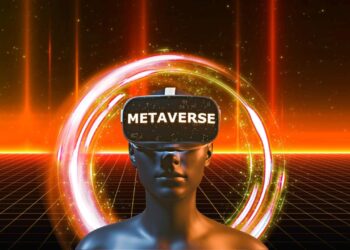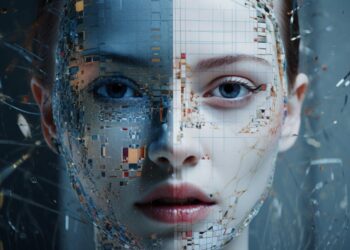The emergence and proliferation of deepfake technology, a sophisticated form of synthetic media generated by advanced Artificial Intelligence (AI) algorithms, represent a critical, existential threat to the integrity of global information, individual privacy, and democratic stability. Far from being a niche concern, deepfakes—highly realistic yet fabricated videos, audio recordings, or images—are rapidly becoming an accessible tool for disinformation, fraud, and personal abuse. The speed and conviction with which these digital forgeries can be created and disseminated demand immediate, multi-layered defensive strategies that span technological innovation, robust legal frameworks, and comprehensive public education. This extensive article dissects the deepfake crisis, detailing its underlying mechanisms, the manifold societal risks, and the urgent, all-encompassing defensive posture required to protect objective reality in the digital age.
The Anatomy of Digital Deception

Deepfakes derive their name and power from Deep Learning, a subfield of AI that uses neural networks with many layers to model complex abstractions in data. These algorithms allow creators to manipulate, replace, or synthesize the likeness and voice of individuals with terrifying precision.
A. Generative Adversarial Networks (GANs)
The primary engine behind many high-quality deepfakes is the Generative Adversarial Network (GAN). This architecture is composed of two competing neural networks:
- The Generator: This network creates the synthetic content (the deepfake). It starts with random noise and learns to produce increasingly realistic media.
- The Discriminator: This network acts as a critic, tasked with distinguishing between real content and the fake content produced by the Generator.
The two networks are trained in a continuous, zero-sum game. The Generator aims to fool the Discriminator, and the Discriminator strives to avoid being fooled. This adversarial training loop pushes the Generator to create synthetic media that is virtually indistinguishable from authentic content, continually perfecting the realism of the deepfake.
B. Autoencoders and Face-Swapping
Another key technique, especially for face-swapping, utilizes Autoencoders. An autoencoder consists of an encoder, which compresses the input (like a face) into a compact latent space, and a decoder, which reconstructs the original input from that compressed data. For face-swapping:
- Two autoencoders are trained, one on the source person’s face (the one whose identity will be transferred) and one on the target person’s face (the body/context).
- The encoder from the source face and the decoder from the target face are then combined. This allows the target’s movements and expressions to be driven by the source’s identity, resulting in a convincing face swap.
The combination of these powerful AI tools makes the barrier to entry for producing believable forgeries drastically lower, moving the capability from high-end labs to readily available consumer software.
The Far-Reaching Impact of Deepfake Threats
The escalating realism and accessibility of deepfakes threaten to destabilize fundamental aspects of society and commerce. The risks are not theoretical; they are manifesting across multiple sectors.
A. Undermining Democratic Processes and Trust
Deepfakes are potent weapons for disinformation and malinformation campaigns. Fabricated videos of political candidates making damaging statements, or manipulated audio recordings designed to suppress voter turnout, can be released strategically in the final, critical days before an election. The speed of social media ensures the fake content can go viral globally before fact-checkers can issue a definitive debunking. The secondary but equally severe impact is the “Liar’s Dividend,” where genuine, compromising evidence is simply dismissed by the public as “just another deepfake,” thereby protecting malicious actors and eroding faith in all recorded media.
B. Financial Fraud and Corporate Espionage
Deepfake audio is already a documented tool in high-stakes financial fraud. Criminals use synthesized voices of high-ranking executives—often just a few seconds of genuine audio is sufficient—to authorize fraudulent wire transfers or disclose sensitive information. This technique bypasses security measures reliant on voice recognition and exploits the pressure dynamic of a seemingly urgent, personal call from a superior. Furthermore, deepfakes can be used to fabricate corporate scandals or market-moving statements, leading to stock manipulation and massive financial losses.
C. Personal Harassment and Reputational Damage
The most common and devastating current use of deepfakes involves non-consensual deepfake pornography, predominantly targeting women. This constitutes a severe form of digital sexual assault, causing profound psychological harm and reputational destruction. Beyond this, deepfakes can be used for sophisticated extortion schemes, bullying, and harassment, leveraging fabricated compromising videos to coerce victims.
Technological Countermeasures: Staying Ahead in the Arms Race
The primary defense lies in developing AI-driven tools robust enough to detect the subtle, digital fingerprints left behind by deepfake generators.
A. Digital Forensics and Artifact Analysis
Detection systems are trained to look for artifacts that deepfake algorithms struggle to perfectly replicate:
- Inconsistent Blinking and Eye Movement: Early deepfakes often failed to render natural eye blinks because the training data lacked sufficient images of closed eyes. While improved, subtle inconsistencies in blink rate or direction can still be a giveaway.
- Inconsistent Physiology: Deepfakes frequently exhibit unnatural distortions in the edges of the face, teeth, hands, or ears.
- Temporal Inconsistencies: In video deepfakes, slight, frame-to-frame flickering, or jittering can occur because the AI processes each frame somewhat independently, leading to a lack of smooth, temporal coherence.
- Lighting and Shadow Irregularities: The lighting and shadows on the deepfaked face may not align perfectly with the lighting and shadow direction in the background or on the surrounding body.
B. Content Provenance and Authentication
A proactive approach is to create a cryptographic “chain of custody” for genuine media, making it provable that a piece of content has not been tampered with since its creation.
- Digital Watermarking: Imperceptible digital codes can be embedded directly into media at the point of capture (e.g., within a camera’s hardware), allowing detection software to immediately verify the file’s origin and integrity.
- Cryptographic Hashing: A unique, unchangeable hash (digital fingerprint) of the original media file can be recorded onto a public, distributed ledger like a blockchain. If even a single pixel is altered, the new hash will not match the recorded hash, immediately flagging the content as manipulated.
- C2PA (Coalition for Content Provenance and Authenticity): Industry groups are establishing a technical standard for embedding verifiable metadata into media, including the creator, date, and history of edits, to provide consumers with a clear line of sight into the content’s past.
C. Multi-Modal Detection Models
The most advanced detection models use a multi-modal approach, analyzing video, audio, and metadata simultaneously. For instance, a model would check for inconsistencies between the person’s lip movements, the spoken words (speed analysis), and the sound quality, while also scanning the visual frames for artifacts. This holistic scrutiny is far more difficult for a single deepfake generator to defeat.
Legal and Regulatory Frameworks: Establishing Accountability

Technology alone is insufficient if the malicious actors face no consequence. Clear, enforceable laws are essential to provide deterrence and recourse.
A. Specific Deepfake Legislation
Governments must enact laws that specifically criminalize the malicious intent behind the creation and dissemination of deepfakes, rather than banning all synthetic media (which has legitimate uses). This legislation should focus on acts intended for:
- Fraud and financial gain.
- Interference with elections or legal processes.
- Creating non-consensual sexual content.
B. Platform Responsibility and Takedown Mandates
Social media companies and content hosting platforms are the primary distribution channels for deepfakes. Regulatory frameworks must impose clear standards for platform accountability, including:
- Mandatory, visible labeling of AI-generated or synthetic media.
- Swift and effective takedown procedures for verified malicious deepfakes, especially non-consensual sexual content.
- Transparency regarding their deepfake detection and mitigation efforts.
C. Updating Existing Tort and Copyright Law
Traditional legal mechanisms like defamation, libel, and the right of publicity must be modernized. The Right of Publicity needs to explicitly cover the unauthorized use of a person’s digital likeness, voice, and persona, granting individuals more control and legal standing against their digital cloning.
Societal and Educational Resilience: Empowering the Public
The last, and arguably most important, defense is to immunize the public against deception by enhancing digital literacy.
A. Universal Media and Digital Literacy Education
Media literacy must become a core component of education at all levels. Citizens need to be taught how to critically evaluate the source, context, and visual elements of media, fostering a healthy skepticism in the digital environment. Key lessons include:
- Identifying sensationalist or emotionally manipulative headlines.
- Understanding the basic methods of deepfake creation.
- The crucial practice of cross-referencing information with multiple, credible, and independent news sources before accepting it as fact.
B. Promoting Critical Thinking
In an age of overwhelming information, the simple act of “Stop, Think, Verify” is a powerful defense. Encouraging the public to pause and consider the possibility of manipulation before sharing provocative or emotionally charged content can dramatically slow the virality of a deepfake.
C. Rapid-Response Fact-Checking Infrastructure
A robust, international network of journalists, researchers, and technology companies needs to be maintained to act as a rapid-response fact-checking mechanism. When a high-impact deepfake surfaces, this network must quickly authenticate or debunk the content and distribute the verified truth through authoritative channels faster than the deepfake itself can spread.
Conclusion
The proliferation of deepfakes is not merely an inconvenience or a novelty; it represents a genuine crisis of epistemology—a challenge to our ability to know what is real. The sheer velocity and convincing realism of AI-generated content threaten to dismantle the public’s trust in institutional evidence, destabilize financial markets, and corrupt the very foundation of democratic discourse. The arms race between deepfake generators and detectors is inherently imbalanced, as a successful new generation technique can bypass all previous detection models, forcing a perpetual game of catch-up.
Therefore, the only sustainable solution is a decisive, unified defense that transcends purely technological fixes. It requires a fundamental shift in how we approach and regulate digital media. The urgency is paramount:
- We must invest massively and collaboratively in Content Provenance technologies like blockchain and C2PA to establish an unimpeachable Chain of Trust for all authentic media, shifting the burden from detecting the fake to proving the real.
- Legislators must move with unprecedented speed to enact clear, powerful laws that assign severe penalties for the malicious use of deepfakes, particularly concerning electoral interference and non-consensual exploitation. The legal framework must hold both the creators and the platforms accountable for negligent dissemination.
- Most critically, the global society must be equipped with advanced digital literacy as a survival skill. Media skepticism must transition from an academic concept to a universal cultural norm, empowering billions of users to become the first line of defense against synthetic deception.
Failing to implement this urgent, tri-partisan defense—technological, legal, and educational—will not only allow the current deepfake threats to metastasize but will ultimately invite a future where objective truth is so fractured and contested that informed public life becomes impossible. The time to defend reality is now, through a collective, coordinated, and resolute global effort to safeguard the digital commons.











